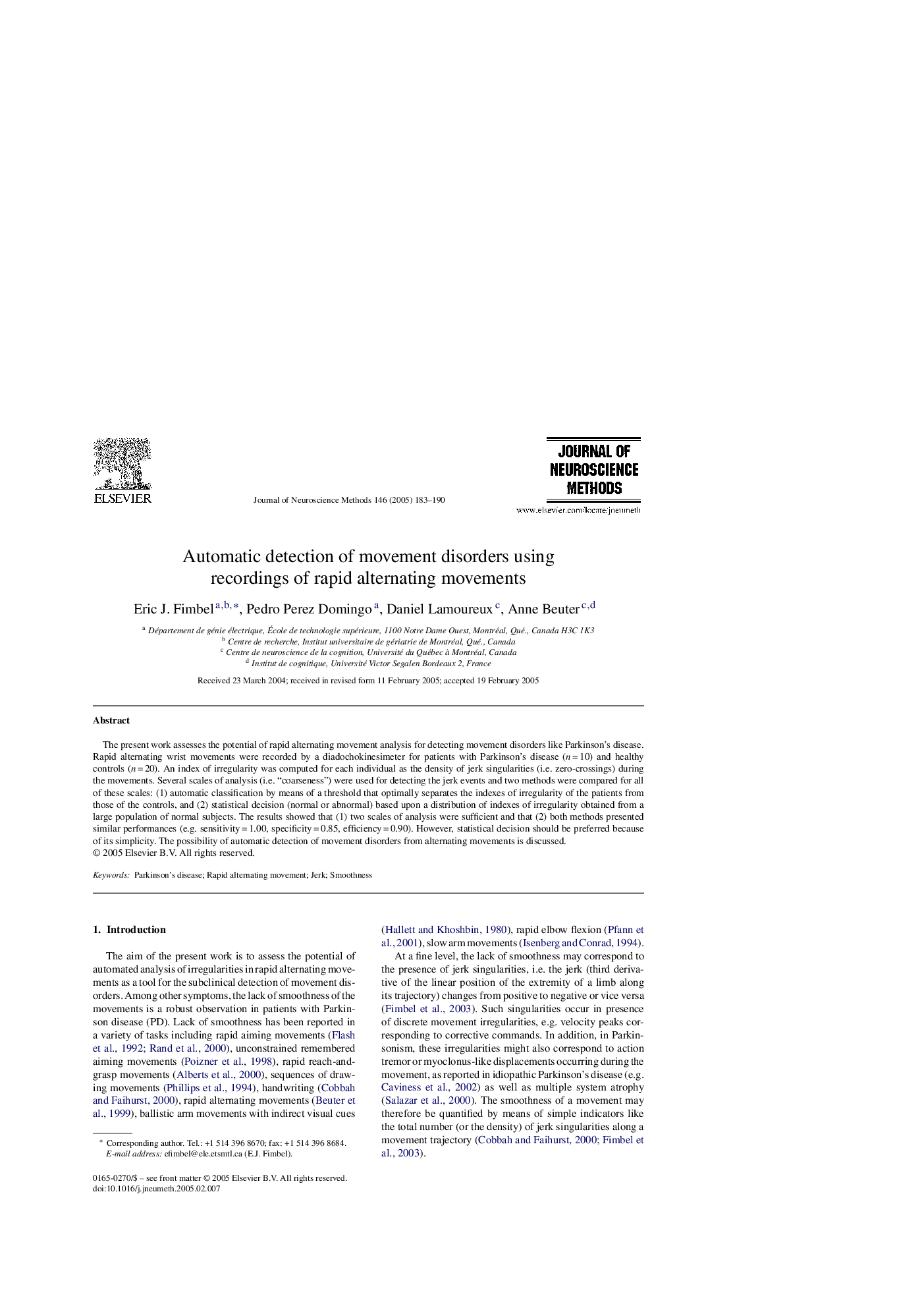| Article ID | Journal | Published Year | Pages | File Type |
|---|---|---|---|---|
| 9424109 | Journal of Neuroscience Methods | 2005 | 8 Pages |
Abstract
The present work assesses the potential of rapid alternating movement analysis for detecting movement disorders like Parkinson's disease. Rapid alternating wrist movements were recorded by a diadochokinesimeter for patients with Parkinson's disease (n = 10) and healthy controls (n = 20). An index of irregularity was computed for each individual as the density of jerk singularities (i.e. zero-crossings) during the movements. Several scales of analysis (i.e. “coarseness”) were used for detecting the jerk events and two methods were compared for all of these scales: (1) automatic classification by means of a threshold that optimally separates the indexes of irregularity of the patients from those of the controls, and (2) statistical decision (normal or abnormal) based upon a distribution of indexes of irregularity obtained from a large population of normal subjects. The results showed that (1) two scales of analysis were sufficient and that (2) both methods presented similar performances (e.g. sensitivity = 1.00, specificity = 0.85, efficiency = 0.90). However, statistical decision should be preferred because of its simplicity. The possibility of automatic detection of movement disorders from alternating movements is discussed.
Keywords
Related Topics
Life Sciences
Neuroscience
Neuroscience (General)
Authors
Eric J. Fimbel, Pedro Perez Domingo, Daniel Lamoureux, Anne Beuter,
